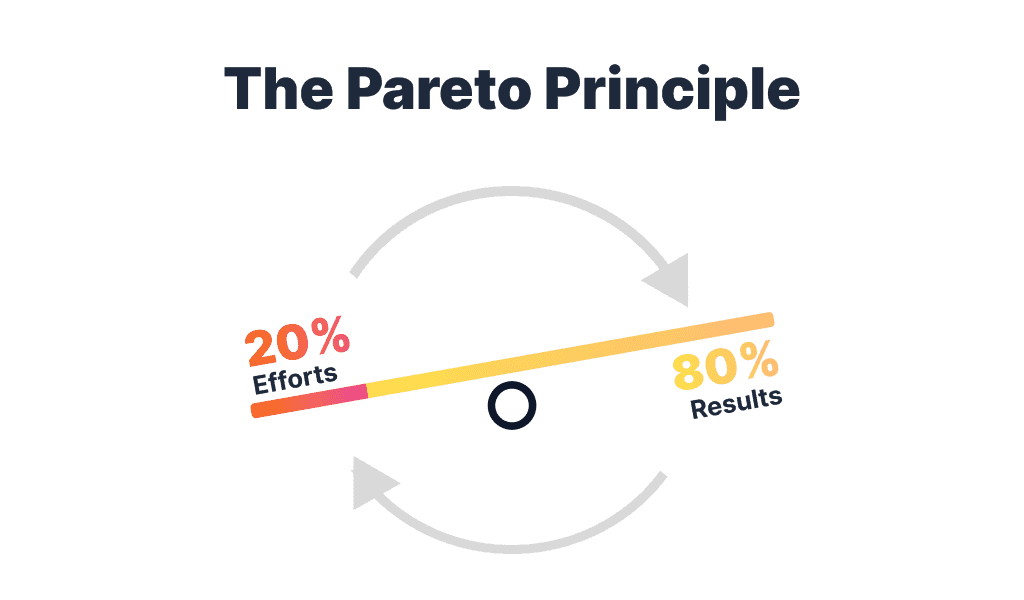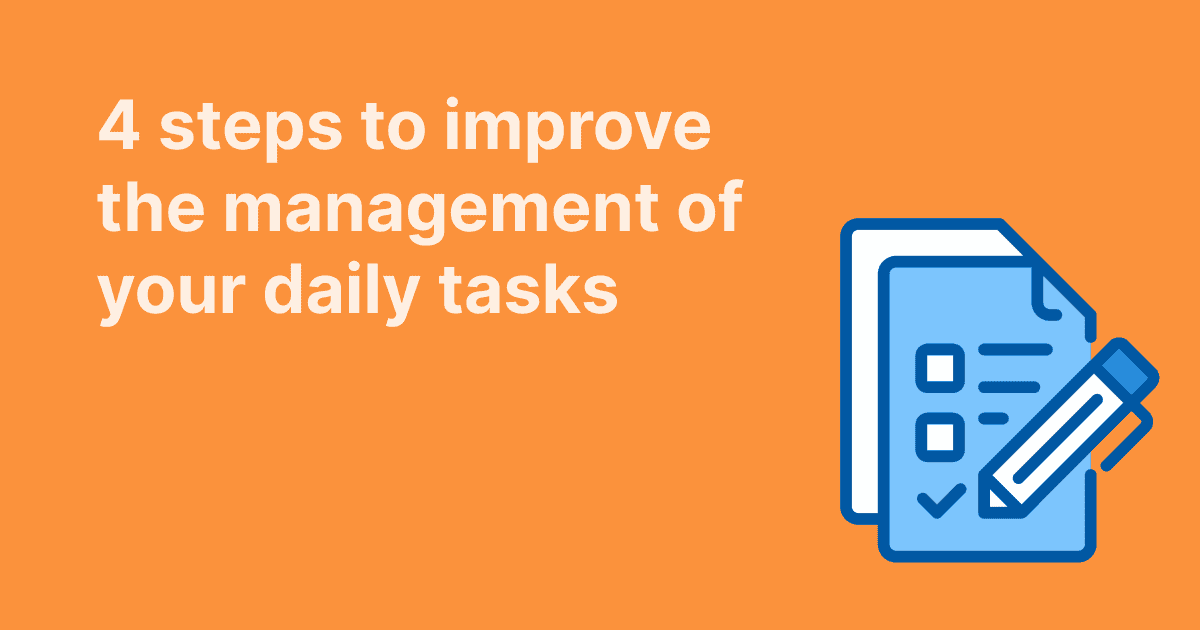What is Pareto's principle?
Pareto's principle, also known as the 80/20 rule, takes its name from the Italian economist Vilfredo Pareto. He first formulated it at the beginning of the 20th century, when he observed that 80% of the land in Italy belonged to just 20% of the population. The principle then stated that, in many situations, around 80% of the results are generated by 20% of the causes. In other words, a minority of efforts produce the majority of results. The principle quickly becomes a powerful concept that can be applied to many aspects of life, including time management.

Time management and the 80/20 rule
Applied to time management, Pareto's principle means that 20% of your activities will produce 80% of your results. This means that if you identify these vital activities and prioritize them, you can save an enormous amount of time by eliminating or reducing less productive activities.
How to save time with Pareto's principle
1. Identify your work tasks:
Start by making a complete list of all your work-related tasks and activities. Make sure you cover all activities, even the smallest ones.
2. Define your impact criteria:
Establish precise criteria for evaluating the impact of each task. Criteria may vary according to your field of activity, but could include indicators such as sales generated, time saved, customer satisfaction, operational efficiency, brand awareness, etc.
3. Assign impact scores:
For each task, assign an impact score based on your established criteria. You can use a numerical scale, for example from 1 to 10, to score each task according to its relative importance.
4. Measure actual results:
Collect quantitative data to assess the actual results of your tasks over a given period. Use key performance indicators (KPIs) to measure the impact of each task. For example, if you work in marketing, you can measure the return on investment (ROI) of different campaigns.
5. Identify high-impact tasks:
Using impact scores and actual results, identify the tasks that have the greatest impact on your business goals. These are usually the 20% of tasks that generate 80% of your results.
6. Prioritize high-impact tasks:
Give these high-impact tasks top priority in your schedule and projects. Ensure that these essential activities receive the bulk of your time and attention.
7. Eliminate or delegate low-impact tasks:
Low-impact tasks, which have little impact on your objectives, can often be eliminated or delegated to other team members if possible. This frees up time and energy to focus on what really matters.
8. Evaluate regularly and adjust:
Pareto's principle is not fixed, and high-impact tasks can change over time. So it's essential to regularly re-evaluate your task list, adjusting impact scores according to actual results, and making sure you stay focused on what's most important for your professional career.
Pareto's principle: examples
To better understand how to apply Pareto's principle in everyday life, here are a few concrete examples:
- If you're an entrepreneur, identify the 20% of your customers who generate 80% of your revenue and focus your marketing efforts on them.
- If you're studying for an exam, identify the 20% of subjects that make up 80% of the exam content and spend more time revising them.
- If you're looking to improve your fitness, identify the 20% of exercises that produce 80% of your results and incorporate them into your training program.
In conclusion, Pareto's principle is a powerful tool for optimizing your time management. By identifying and prioritizing the tasks that have the greatest impact, you can save time and achieve your goals more effectively. So put this 80/20 rule into practice in your life and enjoy the benefits of time management based on Pareto's principle.
Pareto's principle and meetings
Pareto's principle can be a valuable guide to optimizing business meetings. By focusing on the key topics that generate the most impact, using time efficiently and eliminating unnecessary discussion, meetings can become more productive, saving participants valuable time for other essential activities. The key lies in identifying and putting into practice the 20% of factors that generate 80% of desired meeting results.
Applying Pareto's principle with tools
WEDO software is a valuable tool for anyone wishing to apply Pareto's principle to time management. It enables you to prioritize, plan, track and analyze your tasks efficiently, helping you to save time by concentrating on what matters most. By using WEDO in conjunction with Pareto's principle, you can maximize your productivity and achieve your goals faster.



